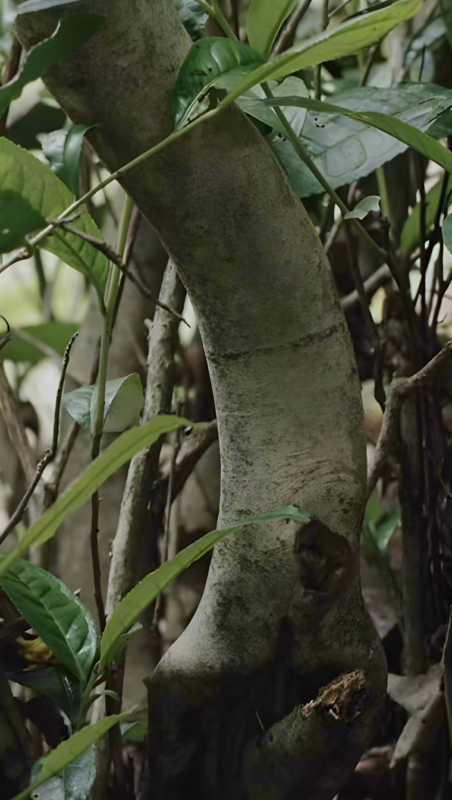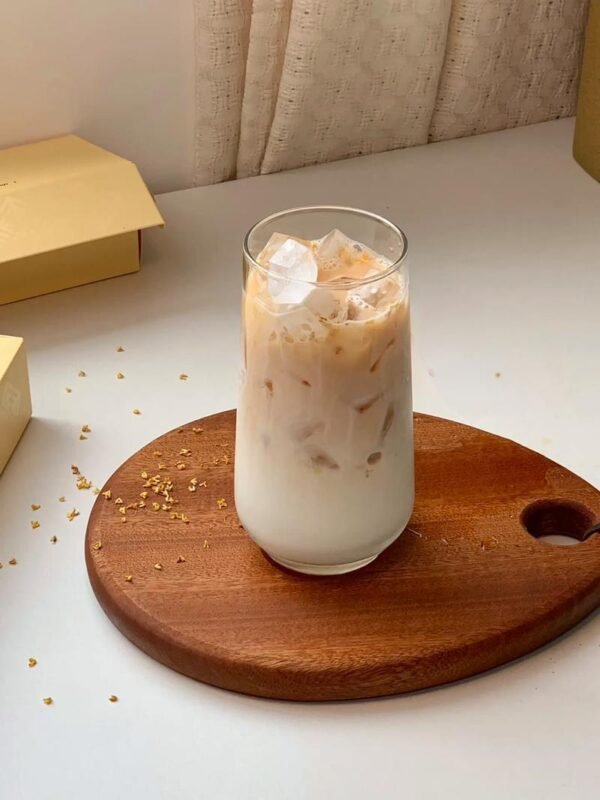下午茶是什么?一场穿越时空、传统与中国野生茶魔法的环球之旅
Afternoon Tea
Unveil the Essence of Afternoon Tea: What Sets British, Indian, Japanese, and Chinese Tea Traditions Apart? Explore How Global Cultures Define “Tea Time” and Discover Which Tea Is a Rare, Timeless Treasure


What is afternoon tea? At 3 PM in London’s Bayswater neighborhood, the air wafts with the aroma of Ceylon black tea steaming in a silver pot, layered with scones, finger sandwiches, and raspberry jam on a porcelain tiered stand. Meanwhile, in a Tokyo tearoom, a bamboo whisk whips matcha into frothy peaks, pairing bitter-sweet green tea with soft cherry blossom pastries. In a Shanghai alleyway, an elderly man brews last year’s wild ancient tree Pu’er in a clay teapot—its deep amber liquid coating his throat with a sweetness no sugar could match.
Afternoon tea isn’t a “one-size-fits-all” ritual. It’s a global “tea conversation,” where British nobles once defined elegance with tiered stands, Japanese tea masters embrace wa-kei-sei-jaku (harmony, respect, purity, tranquility), and Indian streets buzz with spiced masala chai. Yet through it all, Chinese tea—especially its wild ancient tree varieties—elevates this tradition to an unparalleled level of rarity and cultural depth.
A Global Tour of Afternoon Tea: Rituals, Restraint, and Flavor
To grasp afternoon tea’s diversity, let’s explore how different cultures have made it their own:
The UK: The Aristocrat’s “Time Sculpture”
Modern afternoon tea traces its roots to 19th-century British high society. Anna, Duchess of Bedford, invented the “four o’clock tea” to bridge the gap between lunch and dinner. By Victoria’s era, it evolved into a ritual: a three-tier stand (savories at the bottom, scones in the middle, sweets on top) paired with fine china.
For the British, afternoon tea is about ceremony. Tea must be strong Ceylon or Assam; pastries are handcrafted; even the clink of a teaspoon against porcelain is a “note of elegance.” It’s less about drinking and more about performing—a social display of status and heritage.
Japan: The Zen of “One Moment, One Meeting”
Though Japanese tea ceremony (chanoyu) originated from Tang Dynasty China, it’s evolved into a meditative art. From the precise 45° angle whisking of matcha to the deliberate placement of a single withered leaf in a tea room, every gesture screams “treasure the now.”
Japanese afternoon tea (or chakai) is intimate—often just host and guest. Seasonal wagashi (sweets) mirror spring cherries, summer maples, autumn leaves, or winter snow. Even the sweetness of the sweet balances the bitterness of the tea. It’s less a “snack break” and more a “mindful dialogue” with the present.
India: The Spiced Chaos of the Streets
India’s tea culture is a delicious collision of colonial history and local flair. When the British introduced Chinese tea plants, Indians transformed it with native spices—cardamom, cinnamon, ginger—birthing masala chai.
Served in copper pots, boiled with milk and sugar, and sold from street stalls, Indian afternoon tea is unpretentious. It’s about warmth and community: a laborer pausing for a cup, friends sharing laughter over steam, or a family gathering to unwind. Rules? There are none. Just joy, in a cup.
Chinese Afternoon Tea: Boundless Wisdom in a Cup
Compared to its global peers, Chinese afternoon tea is a “living ink painting”—fluid, formless, and deeply woven into daily life.
A Legacy Rooted in Antiquity
China invented tea (earliest records date to 1st century BCE). For millennia, drinking tea was never a “ritual”—it was life. Tang Dynasty scholars brewed jiancha (boiled tea) at dawn; Song Dynasty artists practiced diancha (whisked tea) at noon; Ming and Qing dynasties saw loose-leaf brewing at dusk. Tea wasn’t an “event”—it was a way of being.
Endless Forms, One Spirit
Chinese afternoon tea defies definition:
- A tea farmer in Jiangnan tucks wild greens into coarse bread, sipping fresh-picked leaves by the rice paddy (“field tea”).
- Scholars in Suzhou’s gardens pair Biluochun with crab-shell pastries (“scholar’s tea”).
- Elders in Chengdu teahouses nibble melon seeds with gaiwan tea (“gossip tea”).
- Urban professionals cold-brew Longjing with whole-grain toast (“efficiency tea”).
Because tea originated here, and its varieties are endless, Chinese afternoon tea shed unnecessary fluff. It focuses on tea itself—no fancy tools, no strict rules, just pure, unfiltered enjoyment.
This “boundlessness” stems from Chinese tea’s relentless pursuit of quality. A tea’s worth lies in its origin, varietal, and craft—refined over a thousand years.
The Crown Jewel: Wild Ancient Tree Tea, a “Once-in-a-Lifetime” Treasure
If Chinese tea is the soul of afternoon tea, wild ancient tree tea is its most precious gem. Rare, irreplaceable, and steeped in time, it’s not just tea—it’s a piece of history.
What Is Wild Ancient Tree Tea?
Wild ancient tree tea grows in untouched forests or semi-wild environments, with trees over 100 years old (some over 1,000!). Unlike farmed “terrace tea” (cloned and mass-produced), these trees thrive naturally: roots plunge 10+ meters into soil, symbiotically coexisting with trees, shrubs, and ferns (think: ancient tea trees in Xishuangbanna’s rainforests, shaded by cycads and camphor trees).
Why It’s Unmatched: Nature’s “Code”
Wild ancient tree tea’s superiority lies in three uncopyable traits:
- Environment: A Forest’s “Natural Greenhouse” These trees grow at 1,200–2,000m elevation (e.g., Brown Mountain, Nannuo Mountain in Yunnan), where temperatures hover at 18–22°C, humidity exceeds 80%, and soil is rich in humus and minerals (potassium, magnesium, zinc). Shade from the forest canopy prevents harsh sunlight (reducing bitter tannins), while annual leaf litter (5cm thick) feeds the soil. Result? Leaves brim with amino acids, polyphenols, and aromatic compounds—2–3x more than terrace tea. The brew? Silky, with a lingering, sweet aftertaste.
- Age: A Living “Tea Museum” Most terrace tea trees are 20–30 years old (replaced every few decades for profit). Wild ancient trees? They’re centenarians (or older!). Deeper roots (up to 20m) mine trace elements; slower growth (leaves take 6–8 months to mature) concentrates sugars and amino acids. When brewed, the tea flows like liquid silk, with notes of orchid, honey, or dates. It stays flavorful for 10+ infusions—terrace tea fades by the 5th.
- Rarity: “Drinking History, One Leaf at a Time” Globally, less than 100,000 mu (≈6,666 hectares) of wild ancient tea forests remain—just 0.1% of China’s total tea acreage. Most are in remote areas (Xishuangbanna’s Menghai, Lincang’s Shuangjiang). Worse? China now strictly protects them (e.g., Yunnan’s Ancient Tea Tree Protection Regulations ban logging, transplanting, or over-harvesting). Tomorrow’s cups? Fewer. A 10-year-aged wild Pu’er cake today may be unattainable for future generations.
Sipping Wild Ancient Tree Tea: A Ritual of Connection
Imagine this: A lazy Sunday afternoon. Sunlight filters through sheer curtains onto a wooden table. You pry open a cake of 8-year-old wild ancient tree Pu’er from Menghai, Brown Mountain. Golden buds tumble into a clay pot. Boiling water pours—steam carries the scent of rain-soaked forests (fresh grass), aged wood (dates), and a whisper of earth (time).
First rinse: Warming the cup. Second infusion: A sip—bitter at first, then melting into sweetness. Third infusion onward: Silk slides down your throat. The aftertaste lingers, as if you’re tasting sunlight on leaves, rain seeping into soil, and centuries of patience.
This isn’t just tea. It’s nature’s gift (a tree that survived storms, droughts, and time), cultural heritage (China’s unbroken tea legacy), and a love letter to slow living (pausing to savor life, amid chaos).
Good tea isn’t just flavor—it’s energy. It carries the “qi” (vital force) of heaven, earth, and nature. Drinking it opens your body’s “channels,” aligns your spirit, and connects you to something greater. Take Danzhu Jueluo Ancient Tree Energy Tea, for example:
- Heritage : Sourced from 1614 Qing Dynasty imperial gardens, once served to emperors. The Manchu Ma family guarded its secret for generations.
- Terroir : Grown on “dragon veins” (energetic landforms) in deep mountains, where qi (vital energy) converges. This tea isn’t just brewed—it’s a fusion of wood, fire, earth, metal, and water (the five elements).
- Craft : Hand-picked, sun-dried, and stone-pressed—no machines. Each leaf retains its natural shape, releasing flavor and energy as it steeps.
- Rarity : Limited batches (no mass production). Some varieties require pre-orders—owning a gram is like holding a piece of history.
In China, we don’t use tea bags for fine tea. Why? A tea’s true beauty lies in its natural form—unfurling leaves, shifting colors, evolving aromas. Each brew is a one-of-a-kind performance. Good tea isn’t just for the palate; it’s a tool to unlock your body’s potential, to “awaken” your spirit.
Conclusion: Afternoon Tea Is About Presence
So, what is afternoon tea? It’s not fancy cups, delicate pastries, or rigid rituals. It’s an attitude: carving out time in a busy world to connect—with nature, with others, and with yourself.
Chinese tea, especially wild ancient tree tea, embodies this. It’s a taste of history, a tribute to scarcity, and a reminder to cherish the moment. Next time you sip afternoon tea, choose wild ancient tree tea—not for status, but to chat with nature, toast to time, and reconnect with what matters.
After all, some beauties are fleeting. Once missed, they’re gone forever.




